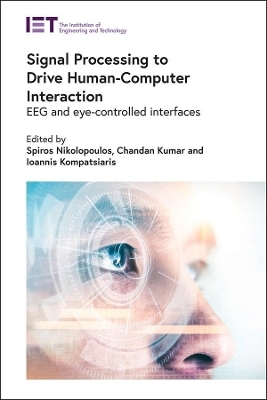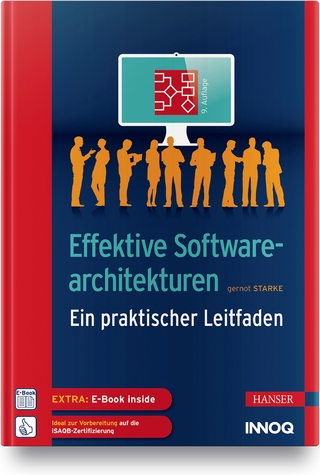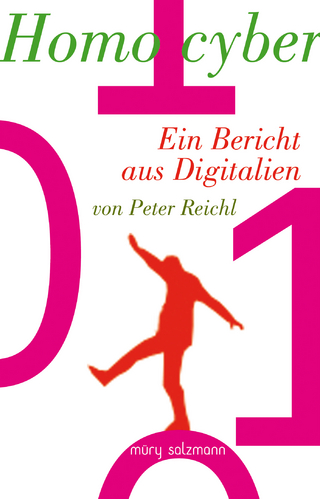
Signal Processing to Drive Human-Computer Interaction
Institution of Engineering and Technology (Verlag)
978-1-78561-919-9 (ISBN)
The evolution of eye tracking and brain-computer interfaces has given a new perspective on the control channels that can be used for interacting with computer applications. In this book leading researchers show how these technologies can be used as control channels with signal processing algorithms and interface adaptations to drive a human-computer interface.
Topics included in the book include a comprehensive overview of eye-mind interaction incorporating algorithm and interface developments; modeling the (dis)abilities of people with motor impairment and their computer use requirements and expectations from assistive interfaces; and signal processing aspects including acquisition, preprocessing, enhancement, feature extraction, and classification of eye gaze, EEG (Steady-state visual evoked potentials, motor imagery and error-related potentials) and near-infrared spectroscopy (NIRS) signals. Finally, the book presents a comprehensive set of guidelines, with examples, for conducting evaluations to assess usability, performance, and feasibility of multi-model interfaces combining eye gaze and EEG based interaction algorithms.
The contributors to this book are researchers, engineers, clinical experts, and industry practitioners who have collaborated on these topics, providing an interdisciplinary perspective on the underlying challenges of eye and mind interaction and outlining future directions in the field.
Spiros Nikolopoulos is a senior researcher at the Centre for Research and Technology Hellas (CERTH) in the Information Technologies Institute (ITI) Greece. Brain-computer interfaces based on EEG analysis is classified among his main research interests, leading the brain-related activities of his lab. He is the co-author of 22 papers in refereed journals, 9 book chapters and more than 55 conference papers in international conferences. Chandan Kumar is a post-doctoral researcher, leading the working group of Interactive Web and Human Computing at the Institute for Web Science and Technologies, Koblenz, Germany. His research interests combine the interdisciplinary fields of eye tracking, Web, geovisualization, and human-computer interaction. His research work has been recognized at several international venues with more than 40 publications at peer-reviewed conferences, journals and workshops. Ioannis Kompatsiaris is a senior researcher at the Centre for Research and Technology Hellas (CERTH) in the Information Technologies Institute (ITI) Greece, where he leads the Multimedia, Knowledge and Social Media Analytics Lab. He is the co-author of 129 papers in refereed journals, 46 book chapters, 8 patents and more than 420 papers in international conferences. He is a senior member of IEEE and member of ACM.
Chapter 1: Introduction
Part I: Reviewing existing literature on the benefits of BCIs, studying the computer use requirements and modeling the (dis)abilities of people with motor impairment
Chapter 2: The added value of EEG-based BCIs for communication and rehabilitation of people with motor impairment
Chapter 3: Brain-computer interfaces in a home environment for patients with motor impairment - the MAMEM use case
Chapter 4: Persuasive design principles and user models for people with motor disabilities
Part II: Algorithms and interfaces for interaction control through eyes and mind
Chapter 5: Eye tracking for interaction: adapting multimedia interfaces
Chapter 6: Eye tracking for interaction: evaluation methods
Chapter 7: Machine-learning techniques for EEG data
Chapter 8: BCIs using steady-state visual-evoked potentials
Chapter 9: BCIs using motor imagery and sensorimotor rhythms
Chapter 10: Graph signal processing analysis of NIRS signals for brain-computer interfaces
Part III: Multimodal prototype interfaces that can be operated through eyes and mind
Chapter 11: Error-aware BCIs
Chapter 12: Multimodal BCIs - the hands-free Tetris paradigm
Chapter 13: Conclusions
| Erscheinungsdatum | 03.07.2020 |
|---|---|
| Reihe/Serie | Control, Robotics and Sensors |
| Verlagsort | Stevenage |
| Sprache | englisch |
| Maße | 156 x 234 mm |
| Themenwelt | Mathematik / Informatik ► Informatik |
| Technik ► Elektrotechnik / Energietechnik | |
| ISBN-10 | 1-78561-919-5 / 1785619195 |
| ISBN-13 | 978-1-78561-919-9 / 9781785619199 |
| Zustand | Neuware |
| Haben Sie eine Frage zum Produkt? |
aus dem Bereich


